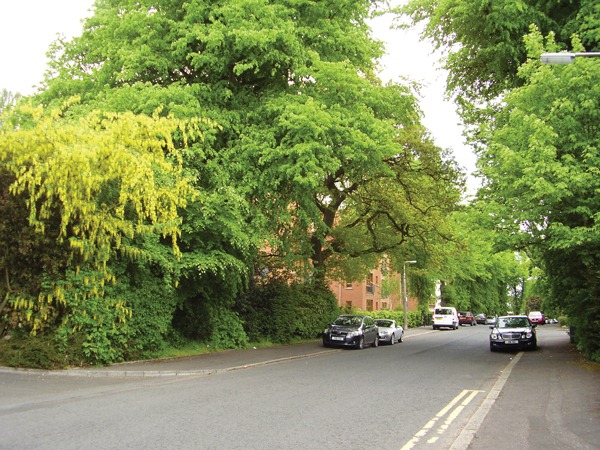Policy Exchange’s new garden cities concept
Modern garden cities can deliver high design standards and a step change in economic performance, according to Policy Exchange’s Alex Morton. He shares his ambitions with Peter Cheney.
Victorian urban planner Ebenezer Howard pioneered the idea of the garden city: attractive communities surrounded by green belts, to absorb the growing populations in the Industrial Revolution.
Two came to fruition in Hertfordshire (at Letchworth and Welwyn Garden City) and Policy Exchange is now proposing a modified version which could be rolled out anywhere in the UK. The concept is put forward in ‘Cities for Growth: Solutions to our planning problems’, authored by senior research fellow Alex Morton.
“The idea of a modern garden city is to create large, attractive urban areas,” Morton remarks. “You would allow compulsory purchase of agricultural land, at three times the fair value, to pay for infrastructure build costs and the profits needed to get private investors interested.”
Politicians, crucially, should not take the lead on garden cities as that could put off public support. Businesses and investors could form a corporation, similar to a previous new town corporation.
The new cities “would allow quite a lot of capital expenditure” and a levy on development could fund transport connections to surrounding regions. He adds: “It would be a big boost to growth and a big boost to housing, and the idea behind this is it should be supported by local people rather than just imposed.”
Localism has been a key theme in Policy Exchange’s work and Morton contrasts this approach to development with the imposition of new towns by central government after the Second World War. However, new towns linked to successful regions (e.g. Milton Keynes) have proved successful and garden cities should also be connected to existing urban areas.
Local people, he says, should approve a new garden city through a referendum. The threshold for a ‘yes’ vote must be set high (e.g. 60 per cent) due to the importance of the decision. Existing residents should be offered 75 per cent of their home’s value, rising to 150 per cent when compulsory purchases occur.
Garden cities would have their own planning system within wide city limits (ratified by a public vote) and the corporation should control transport infrastructure spending.
Green belts, he contends, force cities to become denser and therefore less green, less pleasant to live in and less competitive. Garden cities would be permitted on green belts, provided that the corporation commits to 30 per cent of the city being set aside for open green spaces.
Past experience shows that villages absorbed into cities can keep their attractive character e.g. Hampstead in London. While South East England is more likely to take up the idea, with extensive flat spaces, he emphasises that this is an idea for the whole UK, particularly in areas with a “chronic shortage” of housing.
The crux of his argument is that cities matter and the current system builds “too little and of lower quality housing”. Cities raise their residents’ productivity, increase competition and economies of scale, and speed up the flow of information and ideas. Successful industries cluster around urban centres and the rise of Asian cities makes it even more important to get our urban policy ‘right’.
Culture change
Morton is highly critical of the current English planning system and many of his comments will also resonate in Northern Ireland, where poor urban design and housing shortages also pose problems. Land rights were nationalised in England in 1947, and planning was centralised in Northern Ireland in 1972.
He blames poor planning for raising the cost of housing and business space. Expensive housing, in turn, drives up welfare bills and taxes, and diverts funding into property speculation. Brownfield development in inner cities is discouraged, even if neighbours have no objections, as it doesn’t fit with the plan.
Planning, though, has a legitimate role in regulating the ‘externalities’ which affect a resident’s quality of life e.g. traffic, pylons, green spaces and the design of nearby developments.
It is put to Morton that localised planning decisions sound good in theory yet may not benefit the environment. He responds by pointing out that most people choose energy-efficient homes, a pro-environment choice, as energy prices rise. A suburban home with plenty of parking space is an ideal for many but planners often don’t think the same way.
“The idea that we should be trying to save the planet through planning has basically been a disaster,” he states. Morton points to ‘garden-grabbing’ which results in ugly cities cluttered with cars. London, for example, lost 1.5 per cent of its green space each year during the 1990s, due to gardens being paved over in the outer boroughs.
“This is exactly because planners have suffered from mission creep … instead of trying to say: ‘Let’s try and build something that’s reasonably attractive and put some basic facilities in there.’” Morton continues: “The planning system has overextended itself and I think that’s been a negative for the environment and for society.” He finds that some planners are starting to realise the problem but others are dismissive.
Morton has described some planning policies as “almost Soviet-style” e.g. by deciding that the Yorkshire town of Barnsley would need exactly 500 extra jobs in 2018. He concedes that the Attlee Government’s nationalisation was done with “the best of intentions” but no longer works today.
“In some people there is a slightly unpleasant desire to control but a lot of people genuinely believe that what they’re doing is for the good of society,” he says of planners.
“They genuinely think that if they weren’t in place, there would be a crazy system: let’s imagine where house prices go all over the place and we build lots of unattractive housing. But then I would ask them to look at where we are now.”






